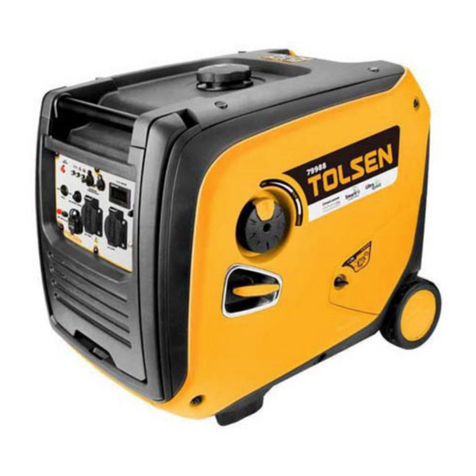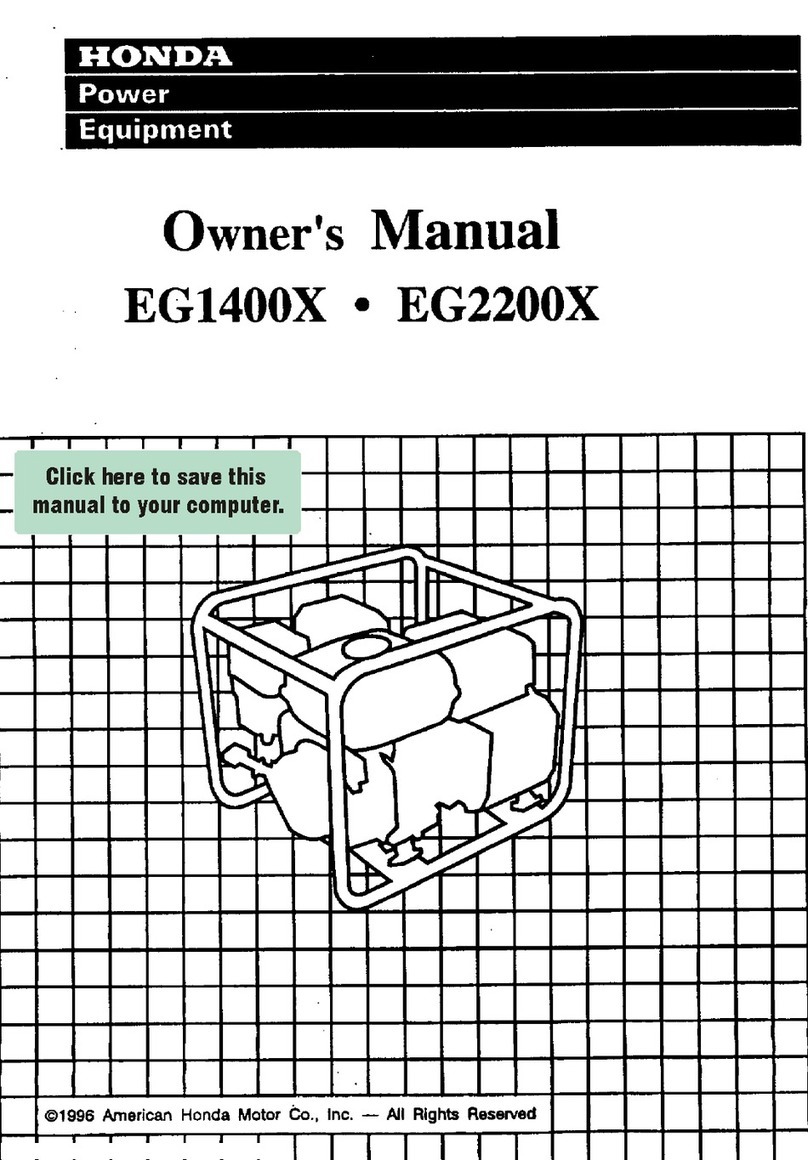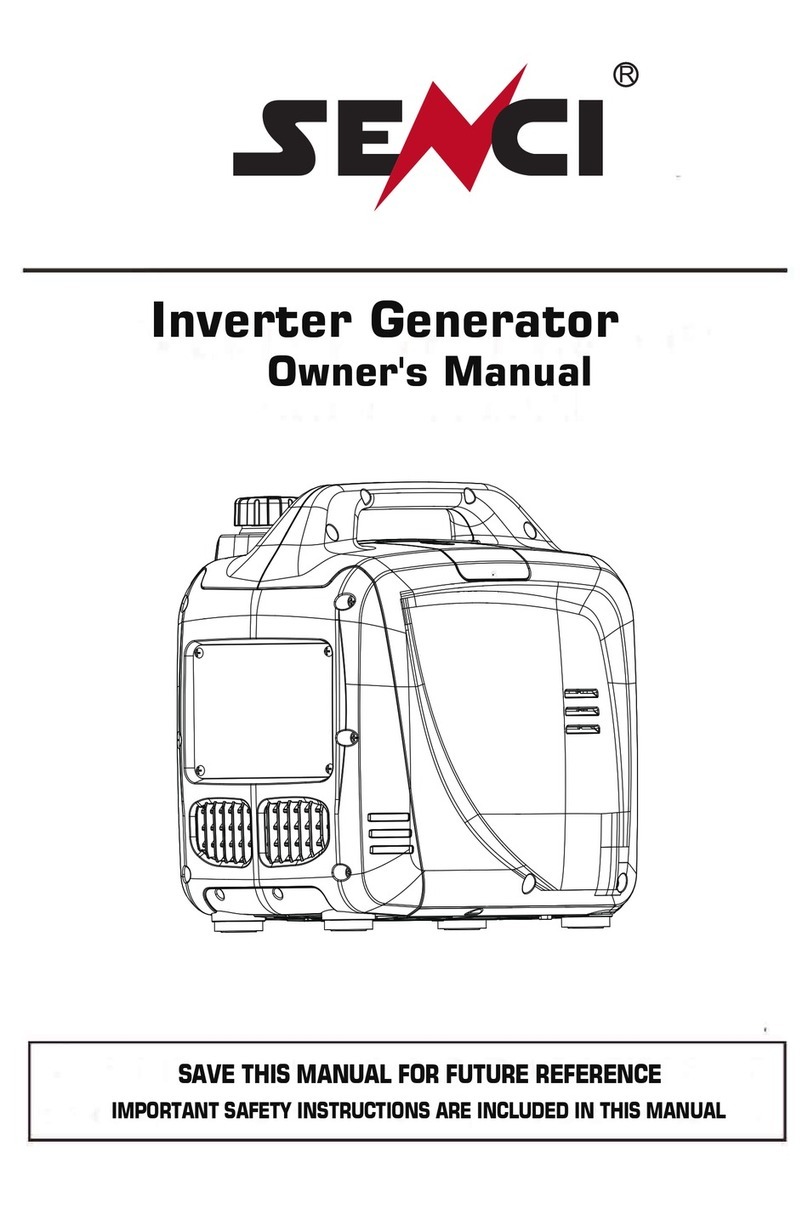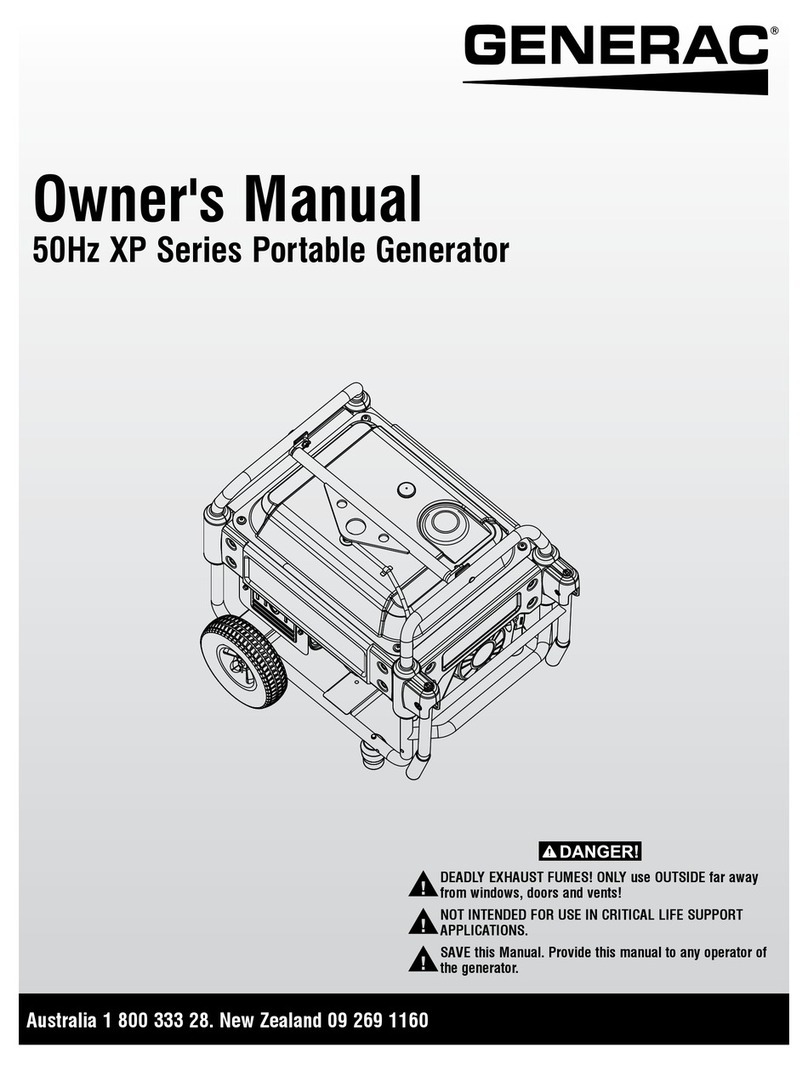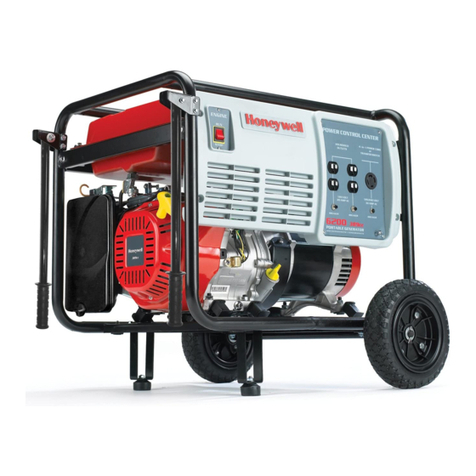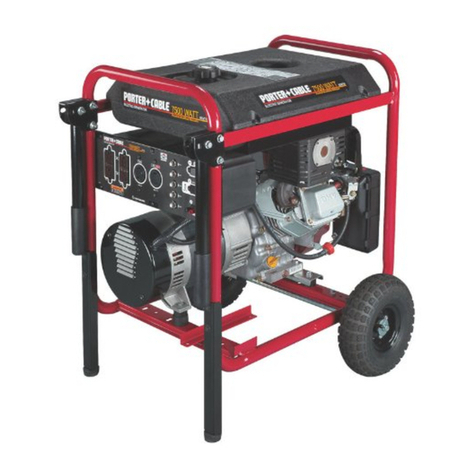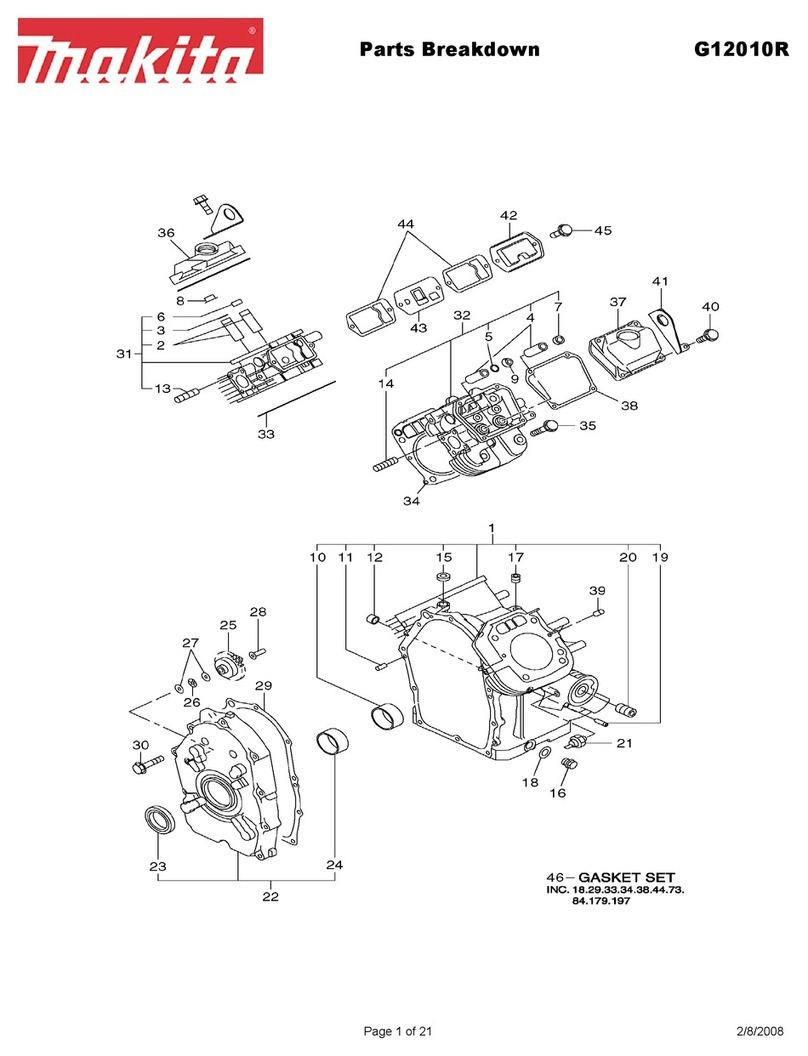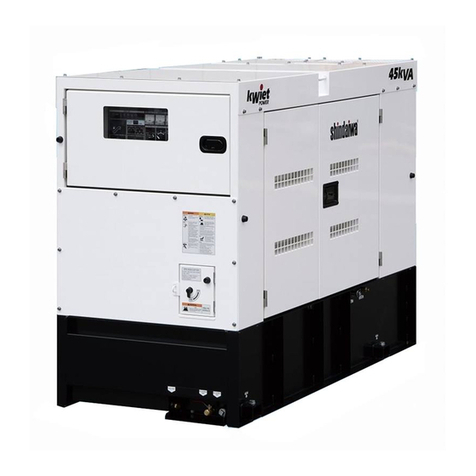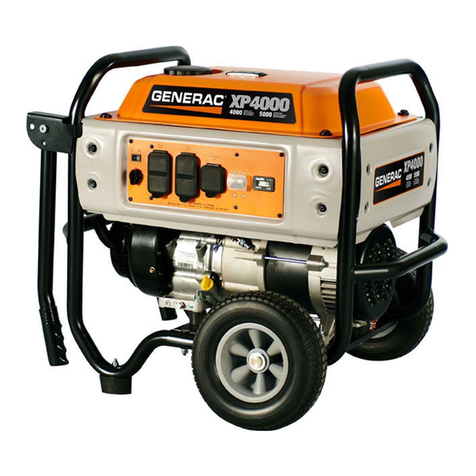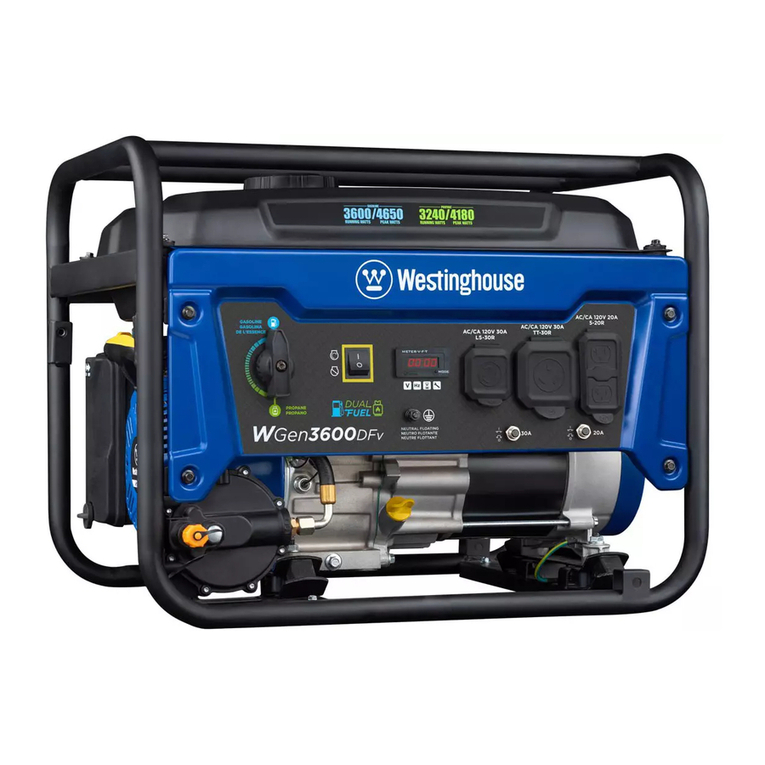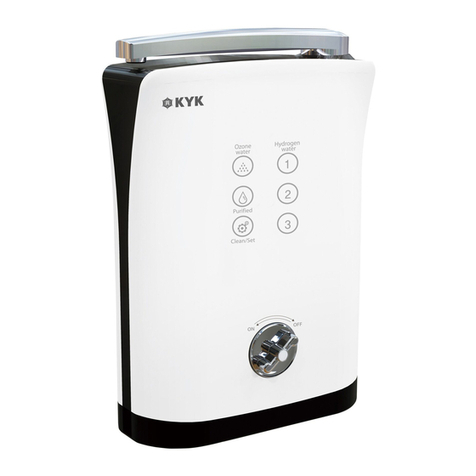TOLSEN TOOLS 79991 User manual

79991/79992/79993
GASOLINE GENERATOR
INSTRUCTION MANUAL
SAVE THIS MANUAL !
You will need this manual for safety instructions, operating procedures and warranty.
Put it and the original sales receipt in a safe dry place for future reference.

Set up precautions
Operating precautions
IMPORTANT SAFETY INFORMATION
SAFETY
1. This unit is to be installed so that access is restricted to only qualified service personnel who have been
instructed of the reasons for the restrictions applied to the location and about any precautions that must
be taken. Access shall be through the use of a special tool, or lock and key, or other means of security and
shall be controlled by the authority responsible for the location.
2. Gasoline fuel and fumes are flammable, and potentially explosive. Use proper fuel storage and handling
procedures. Do not store fuel or other flammable materials nearby.
3. Have multiple ABC class fire extinguishers nearby
4. Operation of this equipment may create sparks that can start fires around dry vegetation. A spark arrestor
may be required. The operator should contact local fire agencies for laws or regulations relating to fire
prevention requirements.
5. Set up and use only on a flat, level, well-ventilated surface.
6. All connections and conduits from the Generator to the load must only be installed by trained and
licensed electricians, and in compliance with all relevant local, state, and federal electrical codes and
standards, and other regulations where applicable.
7. Connections for standby power to a building electrical system must be made by a qualified electrician.
The connection must isolate the Generator power from utility power, and must comply with all applicable
laws and electrical codes.
8. Wear ANSI-approved safety goggles, heavy-duty work gloves, and dust mask/respirator during set up.
9. Use only lubricants and fuel recommended in this manual.
10. Improper connections to a building electrical system can allow electrical current from the Generator to
backfeed into the utility lines. Such backfeed may electrocute utility company workers or otherswho
contact the lines during a power outage, and the Generator may explode, burn, or cause fires when
utility power is restored. Consult the utility company and a qualified electrician if intending to use the
Generator for back up power.
11. Do not operate the Generator before grounding. The Generator must be earth-grounded in accordance
with all relevant electrical codes and standards before operation.
2
SAVE THESE INSTRUCTIONS
This manual contains important instructions that should be followed during installation and maintenance
of the Generator and any batteries.
1.CARBON MONOXIDE HAZARD Using a generator indoors CAN KILL YOU IN MINUTES.
Generator exhaust contains carbon monoxide. This is a poison you cannot see or smell.
NEVER use inside a home or garage, EVEN IF doors and windows are open.
Only use OUTSIDE and far away from windows, doors, and vents.

2. Never use a generator indoors, including in garages, basements, crawlspaces and sheds. Opening doors
and windows or using fans will NOT prevent carbon monoxide build up in the home.
3. When using generators, keep them outdoors and far away from open doors, windows, and vents to avoid
toxic levels of carbon monoxide from building up indoors.
4. If you start to feel sick, dizzy, or weak while using a generator, get to fresh air right away. The carbon
monoxide from generators can quickly lead to full incapacitation and death.
5. Keep children away from the equipment, especially while it is operating.
6. Keep all spectators at least six feet from the Engine during operation.
7. Do not touch engine during use. Let engine cool down aer use.
8. Never store fuel or other flammable materials near the engine.
9. Fire Hazard! Do not fill gas tank while engine is running. Do not operate if gasoline has been spilled.
Clean spilled gasoline before starting engine. Do not operate near pilot light or open flame.
10. If the plugged-in product operates abnormally or unusually slow, immediately stop using the Generator
as a power source. Always read and adhere to the instruction manual of the product to be powered, to
make sure that it can be safely and efficiently powered by a portable generator.
11. Before connecting an appliance or power cord to the Generator: Make sure that it is in good working
order. Faulty appliances or power cords can create a potential for electrical shock.
12. Do not exceed the maximum power rating of the Generator. Make sure that the total electrical rating of
the all of the tools or appliances plugged into the Generator at the same time does not exceed that of the
Generator. Check that the startup surge will not be beyond the limit of the Generator. Power levels
between rated and maximum may be used for no more than 30 minutes.
13. Avoid substantially overloading which will trip the circuit breaker. Exceeding the time limit for maximum
power operation or slightly overloading the Generator may not switch the circuit breaker or circuit
protector OFF, but will shorten the service life of the Generator.
14. Do not attempt to connect or disconnect load connections while standing in water, or on wet or soggy
ground.
15. Do not touch electrically energized parts of the Generator and interconnecting cables or conductors
with any part of the body, or with any non-insulated conductive object.
16. Connect the Generator only to a load or electrical system (230 volt) that is compatible with the electrical
characteristics and rated capacities of the Generator.
17. GFCI PRECAUTIONS Test Ground Fault Circuit Interrupter (GFCI) receptacles before each use as follows:
a. Disconnect all devices from the Generator. b. Start the engine. c. Press Test button on receptacle to trip
the GFCI device. d. The Reset button should extend, cutting off electricity to the receptacle. e. If above
test fails, do not use receptacle until it is repaired or replaced. f. Press Reset button in for use. GFCI
receptacles will not protect against electric shock if Generator is not grounded. Refer to Grounding on
page 8.
18. Insulate all connections and disconnected wires.
19. Guard against electric shock. Prevent body contact with grounded surfaces such as pipes, radiators,
ranges, and refrigerators.
20. Only use a suitable means of transport and liing devices with sufficient weight bearing capacity when
transporting the Generator.
21. Secure the Generator on transport vehicles to prevent the tool from rolling, slipping, and tilting.
22. Industrial applications must follow OSHA requirements.
SAFETY 3

23. Do not leave the Generator unattended when it is running. Turn off the Generator (and remove safety
keys, if available) before leaving the work area.
24. The Generator engine can produce high noise levels. Prolonged exposure to noise levels above 85 dBA
is hazardous to hearing. Always wear ear protection when operating or working around the gas engine
while it is operating.
25. Wear ANSI-approved safety glasses, hearing protection, and NIOSH-approved dust mask/respirator
during use.
26. People with pacemakers should consult their physician(s) before use. Electromagnetic fields in close
proximity to a heart pacemaker could cause pacemaker interference or pacemaker failure. Caution is
necessary when near the engine’s magneto or recoil starter.
27. Use only accessories that are recommended by tolsen Tools for your model. Accessories that may be
suitable for one piece of equipment may become hazardous when used on another piece of equipment.
28. Do not operate in explosive atmospheres, such as in the presence of flammable liquids, gases, or dust.
Gasoline-powered engines may ignite the dust or fumes.
29. Keep grounded conductive objects, such as tools, away from exposed, live electrical parts and
connections to avoid sparking or arcing. These events could ignite fumes or vapors.
30. Stay alert, watch what you are doing and use common sense when operating this piece of equipment.
Do not use this piece of equipment while tired or under the influence of drugs, alcohol or medication.
31. Dress properly. Do not wear loose clothing or jewelry. Keep hair, clothing and gloves away from moving
parts. Loose clothes, jewelry or long hair can be caught in moving parts.
32. Parts, especially exhaust system components, get very hot during use. Stay clear of hot parts.
33. Do not cover the Generator or its engine during operation.
34. Keep the Generator, its engine, and surrounding area clean at all times.
35. Do not smoke, or allow sparks, flames, or other sources of ignition around the equipment, especially
when refuelling.
36. Use the Generator, accessories, etc., in accordance with these instructions and in the manner intended
for the particular type of equipment, taking into account the working conditions and the work to be
performed. Use of the equipment for operations different from those intended could result in a
hazardous situation.
37. Do not operate the Generator with known leaks in the engine’s fuel system.
38. When spills of fuel or oil occur, they must be cleaned up immediately. Dispose of fluids and cleaning
materials as per any local, state, or federal codes and regulations. Store oil rags in a bottom-ventilated,
covered, metal container.
39. Keep hands and feet away from moving parts. Do not reach over or across Generator while operating.
40. Before use, check for misalignment or binding of moving parts, breakage of parts, and any other
condition that may affect the Generator’s operation. If damaged, have the Generator serviced before
using. Many accidents are caused by poorly maintained equipment.
41. Use the correct generator for the application. Do not modify the generator or its engine, and do not use
the generator for a purpose for which it is not intended.
4 SAFETY

1. Before service, maintenance, or cleaning: a. Unplug all devices from the Generator. b. Turn the engine
switch to its “OFF” position. c. Allow the engine to completely cool. d. Then, remove the spark plug cap
from the spark plug.
2. Keep all safety guards in place and in proper working order. Safety guards include muffler, air cleaner,
mechanical guards, and heat shields, among other guards.
3. Make sure the Engine Switch is in its “OFF” position before moving the Generator and before performing
any service, maintenance, or cleaning procedures on the unit.
4. Keep all electrical equipment clean and dry. Replace any wiring where the insulation is cracked, cut,
abraded, or otherwise degraded. Replace terminals that are worn, discolored, or corroded. Keep
terminals clean and tight.
5. Do not alter or adjust any part of the equipment or its engine that is sealed by the manufacturer or
distributor. Only a qualified service technician may adjust parts that may increase or decrease governed
engine speed.
6. Wear ANSI-approved safety goggles, heavy-duty work gloves, and dust mask/respirator during service.
7. Maintain labels and nameplates on the equipment. These carry important information. If unreadable or
missing, contact tolsen Tools for a replacement.
8. Have the equipment serviced by a qualified repair person using only identical replacement parts. This will
ensure that the safety of the equipment is maintained. Do not attempt any service or maintenance
procedures not explained in this manual or any procedures that you are uncertain about your ability to
perform safely or correctly.
9. Store equipment out of the reach of children.
10. Follow scheduled engine and equipment maintenance.
Service precautions
SAFETY 5
GFCI Protection: This Generator is equipped with two 3-Prong, duplex 230V ground fault circuit
interrupter (GFCI) receptacles. These outlets provide additional protection from the risk of electric shock.
Should replacement of the receptacles become necessary, use only identical replacement parts that
include GFCI protection.
Refueling:
1. Do not refill the fuel tank while the engine is running or hot.
2. Do not smoke, or allow sparks, flames, or other sources of ignition around the equipment, especially
when refuelling.
3. TO PREVENT FUEL LEAKAGE AND FIRE HAZARD, Do not overfill with fuel. Fill with fuel according to the
Fuel Level information below the Specification chart for your model.
4. Do not fill fuel tank to the top. Leave a little room for the fuel to expand as needed.
5. Refuel in a well-ventilated area only.
6. Wipe up any spilled fuel and allow excess to evaporate before starting engine.
To prevent FIRE, do not start the engine while the smell of fuel hangs in the air.

6 SPECIFICATIONS
FUNCTIONAL DESCRIPTION
ITEM No.:79991( GS /CE)
Generator
Output
Receptacles
230 VAC, 50 Hz, 3000W, 1 Phase; 12 VDC 8.3 A; 2800 Running Watts;
3000 Maximum Starting Watts
2 x VDE PLUG (Earthing); 1 x 12 V DC Connection terminal
Displacement 212cc
Engine Type Horizontal Single Cylinder 4-stroke, OHV
Cooling System Forced air cooled
Fuel
Type 87+ octane, stabilizer-treated unleaded gasoline
Capacity 16L
Engine Oil Type SAE 10W-30
600mlCapacity
Bore x Stroke 70mm x 54mm
ITEM No.:79992( GS /CE)
Generator
Output
Receptacles
230 VAC, 50 Hz, 5000W, 1 Phase; 12 VDC 8.3 A; 4300 Running Watts;
5000 Maximum Starting Watts
2 x VDE PLUG (Earthing); 1 x 12 V DC Connection terminal
Displacement 420cc
Engine Type Horizontal Single Cylinder 4-stroke, OHV
Cooling System Forced air cooled
Fuel
Type 87+ octane, stabilizer-treated unleaded gasoline
Capacity 27L
Engine Oil Type SAE 10W-30
1100mlCapacity
Bore x Stroke 90mm x 64mm
ITEM No.:79993
Generator
Output
Receptacles
230 VAC, 50 Hz, 8000W, 1 Phase; 12 VDC 8.3 A; 7500 Running Watts;
8000 Maximum Starting Watts
2 x VDE PLUG (Earthing); 1 x 12 V DC Connection terminal
Displacement 460cc
Engine Type Horizontal Single Cylinder 4-stroke, OHV
Cooling System Forced air cooled
Fuel
Type 87+ octane, stabilizer-treated unleaded gasoline
Capacity 27L
Engine Oil Type SAE 10W-30
1100mlCapacity
Bore x Stroke 92mm x 69mm

COMPONENTS AND CONTROLS
SETUP 7
Fuel cap Power switch(79991 None)
Fuel valve
Frame
Choke
Air filter
Starter handle
Low oil indicator
Voltmeter
Ground terminals
230VAC receptacle
Circuit breaker
Overload reset button
12VDC receptacle
The following are descriptions of the controls on the power panel. Your Generator has sockets
to power your products with circuit breakers to protect the voltage flow.
1. I O START Engine Switch: Used to start and stop the Engine.
2. AC Receptacles: The Generator contains several AC Receptacles to power tools and equipment.
3.ON OFF Circuit Breakers: The circuit breaker protects the Generator from overloading. The
rating of the breaker and the load it protects are marked near the breaker. Should any of the
Circuit Breakers trip, the Generator will stop the electricity output. If this happens, unplug all
loads from the Generator. Allow the Generator to cool down. Then, press the tripped Circuit
Breaker, restart the Engine, and re-attach loads.
4. Grounding Terminal: Prior to each use, set up the ground wire (not included) connection
to the Grounding Terminal to properly ground the Generator. Refer to Grounding on page 8
for instructions on grounding the Generator
5. Grounding Terminal: Prior to each use, set up the ground wire (not included) connection to the Grounding
Terminal to properly ground the Generator.
Warning: Connect tools and equipment only to the Receptacle (230volt) that is compatible with the
electrical characteristics and rated capacities of the tools and equipment being used.
Foldable handle
(79991 None)

Grounding
High Altitude Operation Above 3000 feet
INITIAL TOOL SET UP/ASSEMBLY
8 SETUP
Read the ENTIRE IMPORTANT SAFETY INFORMATION section at the beginning of this manual
including all text under subheadings therein before set up or use of this product.
TO PREVENT SERIOUS INJURY: Operate only with proper spark arrestor installed. Operation of this
equipment may create sparks that can start fires around dry vegetation. A spark arrestor may be required.
The operator should contact local fire agencies for laws or regulations relating to fire prevention
requirements.
At high altitudes, the engine’s carburetor, governor, and any other parts that control the fuelair ratio will
need to be adjusted by a qualified mechanic to allow efficient high-altitude use and to prevent damage to
the engine and any other devices used with this product.
Note: For additional information regarding the parts listed in the following pages, refer to the Assembly
Diagram near the end of this manual.
The Generator must be properly grounded before use. Have the unit grounded by a qualified electrician if
you are not qualified to do so.
To ground the Generator, connect a 13.3mm² grounding wire (not included) from the Grounding Terminal
on the Control Panel to a grounding rod (not included) that has been driven at least 24 inches deep into
the earth. The grounding rod must be an earth-driven copper or brass rod (electrode) which can
adequately ground the Generator.
TO PREVENT SERIOUS INJURY FROM FIRE:
Follow instructions in a well-ventilated area away from ignition sources. If the engine is hot from use, shut
the engine off and wait for it to cool before proceeding. Do not smoke. NOTICE: Warranty void if
necessary adjustments are not made for high altitude use.
At high altitudes, the engine’s carburetor, governor, and any other parts that control the fuel-air ratio will
need to be adjusted by a qualified mechanic to allow efficient high-altitude use and to prevent damage to
the engine and any other devices used with this product. The fuel system on this engine may be influenced
by operation at higher altitudes. Proper operation can be ensured by installing an altitude kit at altitudes
higher than 3000 . above sea level. At elevations above 8000 , the engine may experience decreased
performance, even with the proper main jet. Operating this engine without the proper altitude kit installed
may increase the engine’s emissions and decrease fuel economy and performance. The kit should be
installed by a qualified mechanic.

Read the ENTIRE IMPORTANT SAFETY INFORMATION section at the beginning of this manual
including all text under subheadings therein before set up or use of this product. Inspect tool before use,
looking for damaged, loose, and missing parts. If any problems are found, do not use tool until repaired.
Operating Instructions
Generator Pre-Start Checks
9SETUP
Inspect engine and equipment, looking for damaged, loose, and missing parts before set up and starting.
If any problems are found, do not use equipment until fixed properly.
Checking and Filling Engine Oil
CAUTION! Your Warranty is VOID if the engine’s crankcase is not properly filled with oil before each use.
Before each use, check the oil level. Engine will not start with low or no engine oil.
1. Make sure the engine is stopped and is level.
2. Close the Fuel Valve.
3. Clean the top of the Dipstick and the area around it. Remove the Dipstick by threading it
counterclockwise, and wipe it off with a clean lint free rag.
4. Full level Full level Reinsert the Dipstick without threading it in and remove it to check the oil level.
the oil level should be up to the full level as shown above.
5. If the oil level is at or below the low mark add the appropriate type of oil until the oil level is at the
proper level. SAE 10W-30 oil is recommended for general use.
6. Thread the dipstick back in clockwise.
NOTICE: Do not run the engine with too little oil. Engine will shut off if engine oil level is too low.
Checking and Filling Fuel
WARNING! TO PREVENT SERIOUS INJURY FROM FIRE:
Fill the fuel tank in a well-ventilated area away from ignition sources. If the engine is hot from use, shut
the engine off and wait for it to cool before adding fuel. Do not smoke.
1. Clean the Fuel Cap and the area around it.
2. Unscrew and remove the Fuel Cap.
3. If needed, fill the Fuel Tank to about 1 inch under the fill neck with 87 octane or higher unleaded
gasoline that has been treated with a fuel stabilizer additive. Follow fuel stabilizer manufacturer’s
recommendations for use.
Note: Do not use gasoline containing more than 10% ethanol (E10). Do not use E85 ethanol.
Note: Do not use gasoline that has been stored in a metal fuel container or a dirty fuel container. It can
cause particles to enter the carburetor, effecting engine performance and/or causing damage.
4. Then replace the Fuel Cap.
5. Wipe up any spilled fuel and allow excess to evaporate before starting engine. To prevent FIRE, do
not start the engine while the smell of fuel hangs in the air.

Before Starting the Generator Engine
Before starting the engine:
a. Follow the Set Up Instructions to prepare the Generator.
b. Unplug all loads from the Generator.
c. Inspect the Generator and engine.
d. Fill the engine with the proper amount and type of both stabilizer-treated fuel and oil.
Basic Generator Use Procedure - See following pages for specific instructions
1. Check that the Generator can handle the wattage needed to power your products.
2. Start the Engine, and allow the Engine and Generator to run and warm up for five minutes aer
starting with no electrical load.
3. With the engine running, test GFCI receptacles before each use as follows:
a. Press Test button on receptacle to trip the GFCI device.
b. The Reset button should extend, cutting off electricity to the receptacle.
c. If above test fails, do not use receptacle until it is repaired or replaced.
d. Press Reset button in for use.
4. Plug in products.
5. When finished using the Generator, disconnect all electrical loads.
Note: Do not allow Generator to run out of fuel with loads attached.
6. Turn off the Engine.
7. Allow the Generator and its Engine to completely cool. Then store the unit in a clean, dry, safe
location out of reach of children and other unauthorized people.
IMPORTANT: Aer starting the engine, allow it to run at no load for five minutes with no load aer each
start-up so that the engine can stabilize.
8. Break-in Period:
a. Breaking-in the engine will help to ensure proper equipment and engine operation.
b. The operational break-in period will last about 3 hours of use. During this period:
• Do not apply a heavy load to the equipment.
c. The maintenance break-in period will last about 20 hours of use. Aer this period:
• Change the engine oil.
Using the Generator
SETUP10

Starting the Engine
OPERATING INSTRUCTIONS 11
1. To start a cold engine, move the Choke to the
START position. To restart a warm engine,
leave the Choke in the RUN position.
2. Open the Fuel Valve
3. urn the Engine Switch to ON.
4. Grip the Starter Handle of the Engine loosely and pull it slowly several times to allow the gasoline to
flow into the Engine’s carburetor. Then pull the Starter Handle gently until resistance is felt. Allow
Cable to retract fully and then pull it quickly. Repeat until the engine starts. Note: Do not let the
Starter Handle snap back against the engine. Hold it as it recoils so it doesn’t hit the engine.
If the engine is electrically started, please follow step 1,2,3, and then turn the start knob to "START".
Release the knob when the engine start to run and then the knob will return to "ON" automatically
Note: If engine does not start, check engine oil level. Engine will not start with low or no engine oil.
5. Allow the Engine to run for several seconds. Then, if the Choke lever is in the START position, move
the Choke Lever very slowly to its RUN position.
Note: Moving the Choke Lever too fast could stall the engine.
IMPORTANT: Allow the engine to run at no load for five minutes with no load aer each start-up so that
the engine can stabilize.
ON
START

Connecting Electrical Loads
Stopping the Engine in an Emergency
OPERATING INSTRUCTIONS
12
Familiarize yourself with the engine controls, power panel and how to start the engine before using the
Generator. Calculate the wattage of the products you will use with the Generator and verify that the
Generator can handle the total load.
Connect only properly wired plugs to the Generator. A plug that is spliced onto a
different cord may be hazardous. Only a qualified electrician should wire a plug onto a cord.
CAUTION Never exceed the rated capacity for this Generator, as serious damage to the Generator
and/or appliances, tools, and equipment could result from an overload. Starting and running wattage
requirements should always be calculated when matching this Generator’s wattage capacity to the
appliance, tool, or equipment.
Do not charge batteries without a proper charge controller. Do not overcharge. a.
Connect the items that require the most wattage first. b. Connect “inductive” load appliances, tools, and
equipment next. Inductive loads are small hand tools and some small appliances. c. Connect any lights
next. d. Voltage sensitive appliances, tools, and equipment should be the last to be connected to the
Generator. Plug voltage sensitive items such as TVs, DVD players, microwaves, and cordless telephones
into a CE® Listed voltage surge protector (not included). Then, connect the surge protector into the
Generator.
IMPORTANT! Failure to connect and operate appliances, tools, and equipment in this sequence can
cause damage to the Generator, appliances, tools, and equipment and will void the Warranty of this
Generator.
To stop the engine in an emergency, turn the Engine Switch off.
NOTICE: Generator shut-off under load may damage the Generator and attached equipment.

Procedures not specifically explained in this manual must be performed only by a qualified
technician.
TO PREVENT SERIOUS INJURY FROM ACCIDENTAL OPERATION: Turn the Power Switch of the
Generator to its “OFF” position, wait for the engine to cool, and disconnect the spark plug cap before
performing any inspection, maintenance, or cleaning procedures. TO PREVENT SERIOUS INJURY
FROM EQUIPMENT FAILURE: Do not use damaged equipment. If abnormal noise, vibration, or excess
smoking occurs, have the problem corrected before further use. Follow all service instructions in this
manual. The engine may fail critically if not serviced properly.
Many maintenance procedures, including any not detailed in this manual, will need to be
performed by a qualified technician for safety. If you have any doubts about your ability to safely service
the equipment or engine, have a qualified technician service the equipment instead.
User-Maintenance Instructions
Cleaning, Maintenance, and Lubrication
OPERATING INSTRUCTIONS 13
Note: This maintenance schedule is intended solely as a general guide. If performance decreases or if
equipment operates unusually, check systems immediately. The maintenance needs of each piece of
equipment will differ depending on factors such as duty cycle, temperature, air quality, fuel quality, and
other factors.
Note: The following procedures are in addition to the regular checks and maintenance explained as part
of the regular operation of the engine and equipment.
Procedure
Before
Each
Use
Monthly
or every
20hr. of
use
Monthly
or every
20hr. of
use
Monthly
or every
20 hr. of
use
Yearly
or
every
300
hr. of
use
Every
2
Years
Brush off outside of
engine
Check engine oil level
Check air cleaner
Check deposit cup
Change engine oil
Clean/replace air cleaner
Check and clean spark
plug
1. Check/adjust idle
speed 2. Check/adjust
valve clearance 3. Clean
fuel tank, strainer and
carburetor 4. Clean
carbon build-up from
Replace fuel line if
necessary
*Service more frequently when used in dusty areas.
**These items should be serviced by a qualified technician.

Checking and Filling Fuel
Engine Oil Change
OPERATING INSTRUCTIONS
14
TO PREVENT SERIOUS INJURY FROM FIRE:
Fill the fuel tank in a well-ventilated area away from ignition sources. If the engine is hot from use, shut
the engine off and wait for it to cool before adding fuel. Do not smoke.
1. Clean the Fuel Cap and the area around it.
2. Unscrew and remove the Fuel Cap.
Note: Do not use gasoline containing more than 10% ethanol (E10). Do not use E85 ethanol.
Note: Do not use gasoline that has been stored in a metal fuel container or a dirty fuel container. It can
cause particles to enter the carburetor, effecting engine performance and/or causing damage.
3. If needed, fill the Fuel Tank to about 1 inch under the fill neck with 87 octane or higher unleaded
gasoline that has been treated with a fuel stabilizer additive. Follow fuel stabilizer manufacturer’s
recommendations for use.
4. Replace the Fuel Cap.
5. Wipe up any spilled fuel and allow excess to evaporate before starting engine. To prevent FIRE, do
not start the engine while the smell of fuel hangs in the air.
CAUTION! Oil is very hot during operation and can cause burns. Wait for engine to cool before changing oil.
1. Make sure the engine is stopped and is level.
2. Close the Fuel Valve.
3. Place a drain pan (not included) underneath the crankcase’s drain plug.
4. Remove the drain plug and, if possible, tilt the crankcase slightly to help drain the oil out. Recycle used oil.
5. Replace the drain plug and tighten it.
6. Clean the top of the Dipstick and the area around it. Remove the Dipstick by threading it
counterclockwise, and wipe it off with a clean lint free rag.
7. Add the appropriate type of oil until the oil level is at the full level.
SAE 10W-30 oil is recommended for
general use.
The SAE Viscosity Grade chart shows other viscosities to use in
different average temperatures.
NOTICE: Do not run the engine with too little oil.
Engine will not start with low or no engine oil.

When the equipment is to remain idle for longer than 20 days, prepare the Engine for storage as follows:
1. CLEANING:
Wait for Engine to cool, then clean Engine with dry cloth.
NOTICE: Do not clean using water. The water will gradually enter the Engine and cause rust damage.
Apply a thin coat of rust preventive oil to all metal parts.
2. FUEL:
To protect the fuel tank during storage, fill the tank with gasoline that has been treated with a fuel stabilizer
additive. Follow fuel stabilizer manufacturer’s recommendations for use.
WARNING! TO PREVENT SERIOUS INJURY FROM FIRE:
Fill tank in a well-ventilated area away from ignition sources. If the engine is hot from use, shut the engine
off and wait for it to cool before adding fuel. Do not smoke.
Air Filter Element Maintenance
Spark Plug Maintenance
Long-Term Storage
MAINTENANCE
OPERATING INSTRUCTIONS 15
1. Remove the air filter cover and the air filter elements and check for dirt.
2. Install the cleaned filter. Secure the Air Cleaner Cover before use.
1. Disconnect spark plug cap from end of plug. Clean out debris from
around spark plug.
2. Using a spark plug wrench, remove the spark plug.
3. Inspect the spark plug: If the electrode is oily, clean it using a clean, dry
rag. If the electrode has deposits on it, polish it using emery paper. If the
white insulator is cracked or chipped, the spark plug needs to be replace.
NOTICE: Using an incorrect spark plug may damage the engine. See the Specifications chart for your
Generator for the type and gap required.
4. When installing a new spark plug, adjust the plug’s gap to the specification on the Specifications
chart. Do not pry against the electrode, the spark plug can be damaged.
5. Install the new spark plug or the cleaned spark plug into the engine. Gasket-style: Finger-tighten until
the gasket contacts the cylinder head, then about 1/2-2/3 turn more. Non-gasket-style:
Finger-tighten until the plug contacts the head, then about 1/16 turn more.
NOTICE: Tighten the spark plug properly. If loose, the spark plug will cause the engine to overheat. If
overtightened, the threads in the engine block will be damaged.
6.Apply dielectric spark plug boot protector (not included) to the end of the spark plug and reattach the
wire securely.

3. LUBRICATION: a. Change engine oil. b. Clean out area around spark plug. Remove spark plug and
pour one tablespoon of engine oil into cylinder through spark plug hole. c. Replace spark plug, but leave
spark plug cap disconnected. d. Pull Starter Handle to distribute oil in cylinder. Stop aer one or two
revolutions when you feel the piston start the compression stroke (when you start to feel resistance).
4. STORAGE AREA:
Cover and store in a dry, level, well-ventilated area out of reach of children. Storage area should also be
away from ignition sources, such as water heaters, clothes dryers, and furnaces.
NOTICE: During extended storage periods the Engine must be started every 3 months and allowed to run
for 15– 20 minutes or the Warranty is VOID.
5. AFTER STORAGE:
Before starting the Engine during or aer storage, keep in mind that untreated gasoline will deteriorate
quickly. Drain the fuel tank and change to fresh fuel if untreated gasoline has been sitting for a month, if
treated gasoline has been sitting beyond the fuel stabilizer’s recommended time period, or if the Engine
does not start.
OPERATING INSTRUCTIONS
16

TROUBLESHOOTING
problem possible Causes probable Solutions
TROUBLESHOOTING 17
Engine will
not start
Engine will not start
FUEL RELATED: 1. No fuel in tank or fuel
valve closed.
2. Choke not in START position, cold
engine.
3. Gasoline with more than 10% ethanol
used. (E15, E20, E85, etc.) 4. Low quality
or deteriorated, old gasoline.
5. Carburetor not primed.
6. Dirty fuel passageways.
7. Carburetor needle stuck. Fuel can be
smelled in the air.
8. Too much fuel in chamber. This can be
caused by the carburetor needle sticking.
9. Clogged Fuel Filter.
IGNITION (SPARK) RELATED:
1. Spark plug cap not connected
securely.
2. Spark plug electrode wet or dirty. 3.
Incorrect spark plug gap.
4. Spark plug cap broken.
5. Circuit breaker tripped (electric start
models only). 6. Incorrect spark timing or
faulty ignition system.
COMPRESSION RELATED:
1. Cylinder not lubricated. Problem aer
long storage periods.
2. Loose or broken spark plug. (Hissing
noise will occur when trying to start.)
3. Loose cylinder head or damaged head
gasket. (Hissing noise will occur when
trying to start.)
4. Engine valves or tappets mis-adjusted
or stuck.
OIL RELATED:
1. Low engine oil.
2. Engine mounted on slope, triggering
low oil shutdown.
OIL RELATED:
1. Fill engine oil to proper level. Check engine oil before
EVERY use.
2. Operate engine on level surface. Check engine oil level.
COMPRESSION RELATED:
1. Pour tablespoon of oil into spark plug hole. Crank
engine a few times and try to start again.
2. Tighten spark plug. If that does not work, replace spark
plug. If problem persists, may have head gasket problem,
see #3.
3. Tighten head. If that does not remedy problem, replace
head gasket.
4. Have qualified technician diagnose/ repair ignition
system.
IGNITION (SPARK) RELATED:
1. Connect spark plug cap properly.
2. Clean spark plug.
3. Correct spark plug gap.
4. Replace spark plug cap.
5. Reset circuit breaker. Check wiring and starter
motor if breaker continues to trip.
6. Have qualified technician diagnose/ repair ignition
system.
FUEL RELATED:
1. Fill fuel tank with fresh 87+ octane stabilizer treated
unleaded gasoline and open fuel valve. Do not use
gasoline with more than 10% ethanol (E15, E20, E85, etc.).
2. Move Choke to START position.
3. Clean out ethanol rich gasoline from fuel system.
Replace components damaged by ethanol. Use fresh 87+
octane stabilizer treated unleaded gasoline only. Do not
use gasoline with more than 10% ethanol (E15, E20, E85,
etc.).
4. Use fresh 87+ octane stabilizer treated unleaded
gasoline. Do not use gasoline with more than 10% ethanol
(E15, E20, E85, etc.).
5. Pull on Starter Handle to prime.
6. Clean out passageways using fuel additive. Heavy
deposits may require further cleaning.
7. Gently tap side of carburetor float chamber with
screwdriver handle.
8. Turn Choke to RUN position. Remove spark plug and pull
the start handle several times to air out the chamber.
Reinstall spark plug and set Choke to START position.
9. Replace Fuel Filter

problem possible Causes probable Solutions
Follow all safety precautions whenever diagnosing or servicing the equipment or engine.
TROUBLESHOOTING
18
Engine stops
when under
heavy load
Engine misfires
Engine stops
suddenly
Engine knocks
1. Dirty air filter.
2. Engine running cold.
1. Spark plug cap loose.
2. Incorrect spark plug gap or
damaged spark plug.
3. Defective spark plug cap.
4. Old or low quality gasoline.
5. Incorrect compression.
1. Low oil shutdown.
2. Fuel tank empty or full of impure or
low quality gasoline.
3. Defective fuel tank cap creating
vacuum, preventing proper fuel flow.
4. Faulty magneto.
5. Disconnected or improperly
connected spark plug cap.
1. Fill engine oil to proper level. Check engine oil before
EVERY use.
2. Fill fuel tank with fresh 87+ octane stabilizer treated
unleaded gasoline. Do not use gasoline with more than
10% ethanol (E15, E20, E85, etc.).
3. Test/replace fuel tank cap. 4. Have qualified technician
service magneto. 5. Secure spark plug cap.
1. Clean or replace element.
2. Allow engine to warm up prior to operating equipment.
1. Check wire connections.
2. Re-gap or replace spark plug.
3. Replace spark plug cap.
4. Use only fresh 87+ octane stabilizer treated unleaded
gasoline. Do not use gasoline with more than 10%
ethanol (E15, E20, E85, etc.).
5. Diagnose and repair compression. (Use Engine will not
start: COMPRESSION RELATED section.)
1. Old or low quality gasoline.
2. Engine overloaded.
3. Incorrect spark timing, deposit
buildup, worn engine, or other
mechanical problems.
1. Fill fuel tank with fresh 87+ octane stabilizer treated
unleaded gasoline. Do not use gasoline with more than
10% ethanol (E15, E20, E85, etc.).
2. Do not exceed equipment’s load rating.
3. Have qualified technician diagnose and service engine.
Engine backfires 1. Impure or low quality gasoline.
2. Engine too cold.
3. Intake valve stuck or overheated
engine.
1. Fill fuel tank with fresh 87+ octane stabilizer treated
unleaded gasoline. Do not use gasoline with more than
10% ethanol (E15, E20, E85, etc.).
2. Use cold weather fuel and oil additives to prevent
backfiring.
3. Have qualified technician diagnose and service engine.
Product doesn’t
have power.
1. Product not plugged in properly.
2. Circuit Breaker tripped.
3. GFCI activated. 4. Product
needs service.
1. Turn off and unplug the product, then plug it back
in again and turn on.
2. Turn off and unplug product. Reset Circuit Breaker.
Plug in product and turn on.
3. Turn off and unplug product. Test GFCI receptacle.
If functioning properly reset GFCI, plug in product
and turn on.
4. Have product repaired.
Product begins
to operate
abnormally.
1. Problem with appliance.
2. Rated load capacity exceeded.
1. Immediately unplug appliance. Have appliance
repaired by a qualified technician, or replace appliance.
2. Lower the number of items plugged into the Generator
to stay within the rated capacity, or use a more powerful
generator.

ASSEMBLY DIAGRAM & PARTS LIST
ASSEMBLY DIAGRAM 19

NO. NO.Description DescriptionQty Qty
1
2
3
4
5
6
7
8
9
10
11
12
13
14
15
16
17
18
19
20
21
22
23
24
25
26
27
28
29
30
31
32
33
34
35
36
37
38
39
40
41
42
43
44
45
46
47
48
49
50
51
52
53
54
55
56
57
58
59
60
61
62
63
64
65
66
67
68
69
70
71
72
73
74
75
76
77
78
79
80
81
82
83
84
85
86
87
88
Head subassembly,cylinder
Gasket,cylinder head
Cover subassembly,cylinder head
Gasket,cylinder head cover
Tube,breather
Bolt subassembly,cylinder head
Tube,breather
Tube,breather
Pin
Bolt,cylinder head
Plug,spark
Crankcase assy.
Seal,oil
Sensor,engine oil
Plug,rubber
Protector,oil
Bolt
Washer
Bolt,drain plug
Clip
Arm,governor
Washer
Pin
Bolt
Bearing
Seal,oil
Cover assy,crankcase
Gasket,crankcase
Cap comp.,oil filer
Pin
Bolt
Bearing
Gear assy,governor
Oil seal
Bearing
Shroud,motor
Bolt
Stopper,motor right cover
Cranksha assy.
Weight,balancer
Clip,piston pin
Piston
Pin,piston
Rod,connecting
1
1
1
1
1
1
2
2
2
4
1
1
1
1
1
1
1
2
2
1
1
1
1
2
1
1
1
1
1
2
7
1
1
1
1
1
3
1
1
1
2
1
1
1
Ring,the first
Ring,the second
Ring set,oil
Camsha assy.
Valve,intake
Valve,exhaust
Spring,valve
Retainer,exhaust valve
Ratator,valve
Guide,seal
Retainer,valve spring
Lier,valve
Tappet,valve
Plate subassembly,lier stopper
Bolt,valve adjusting
Rocker,valve
Nut,valve adjusting
Nut,valve lock
Retainer,valve spring
Washer assembly,bolt and flat
Starter assy,recoil(black)
shroud(yellow)
shroud,cylinder body
Bolt
Bolt
Carburetor assy.
Gasket,air cleaner
Gasket,carburetor
Plate,carburetor insulator
Gasket,inlet
Control assy,choke
Valve,dashpot check
Support,atr cleaner
Nut
Cleaner,air
Muffler assy.
Cover,muffler inner(black)
cushion,muffler
Bracke,muffler muffler
Bolt
Cover,muffler side(black)
bolt
Cover,muffler outer(black)
gasket,exhaust outlet
1
1
1
1
1
1
2
1
1
1
1
2
2
1
2
2
2
2
1
3
1
1
1
1
5
1
1
1
1
1
1
1
1
1
1
1
1
1
1
4
1
9
1
2
20 PARTS LIST
This manual suits for next models
2
Table of contents
Other TOLSEN TOOLS Portable Generator manuals
Popular Portable Generator manuals by other brands
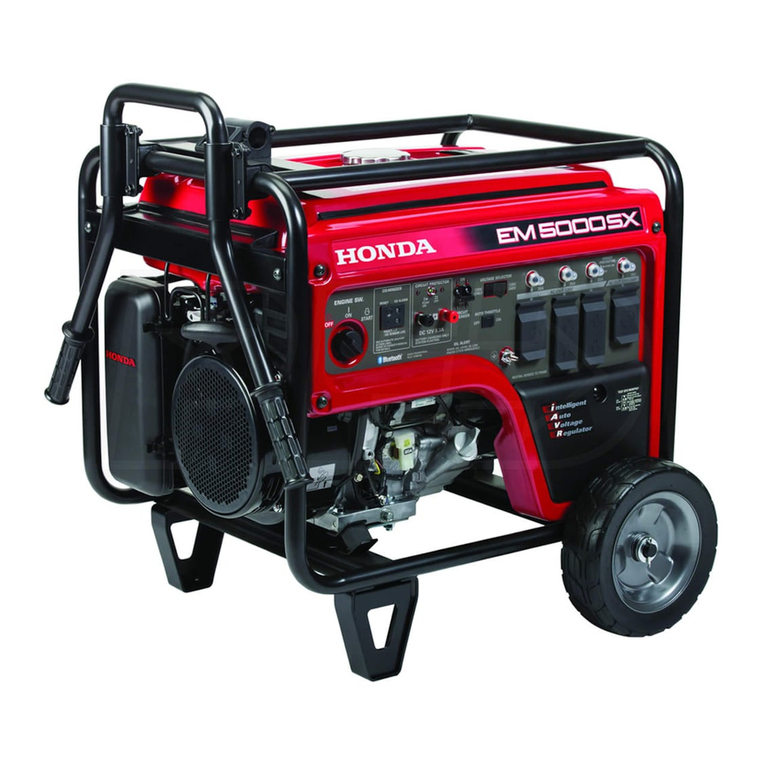
Honda
Honda EM5000SX owner's manual
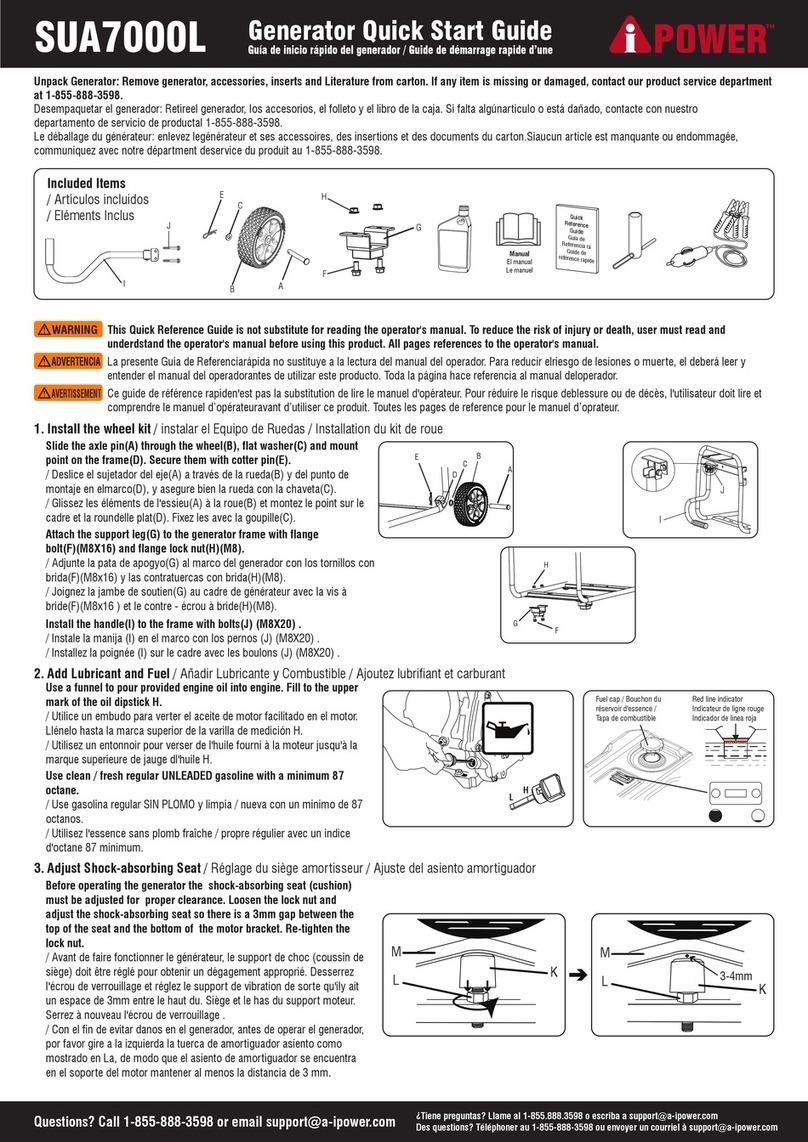
iPower
iPower SUA7000L quick start guide
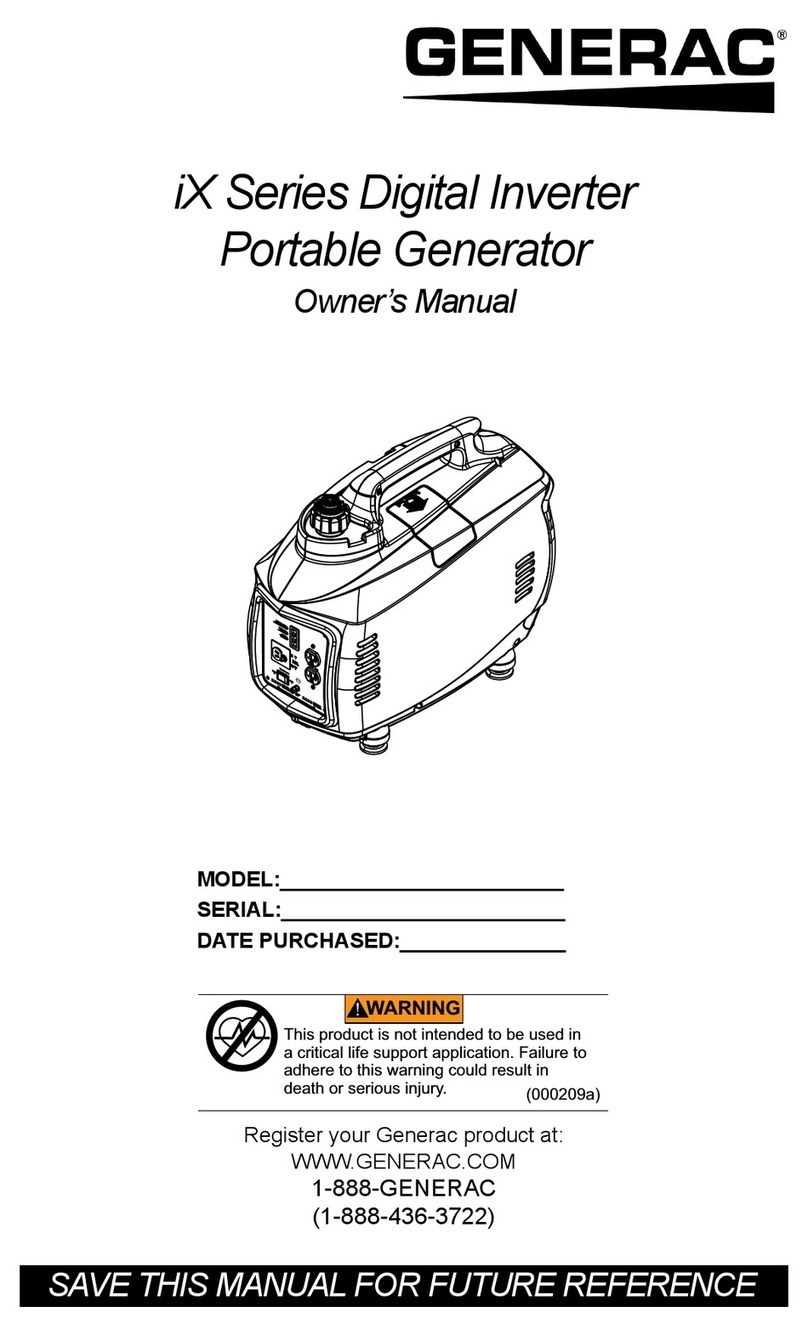
Generac Power Systems
Generac Power Systems iX Series owner's manual
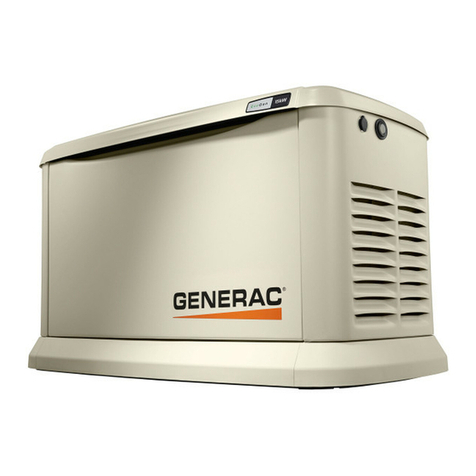
Generac Power Systems
Generac Power Systems 15 kW EcoGen owner's manual
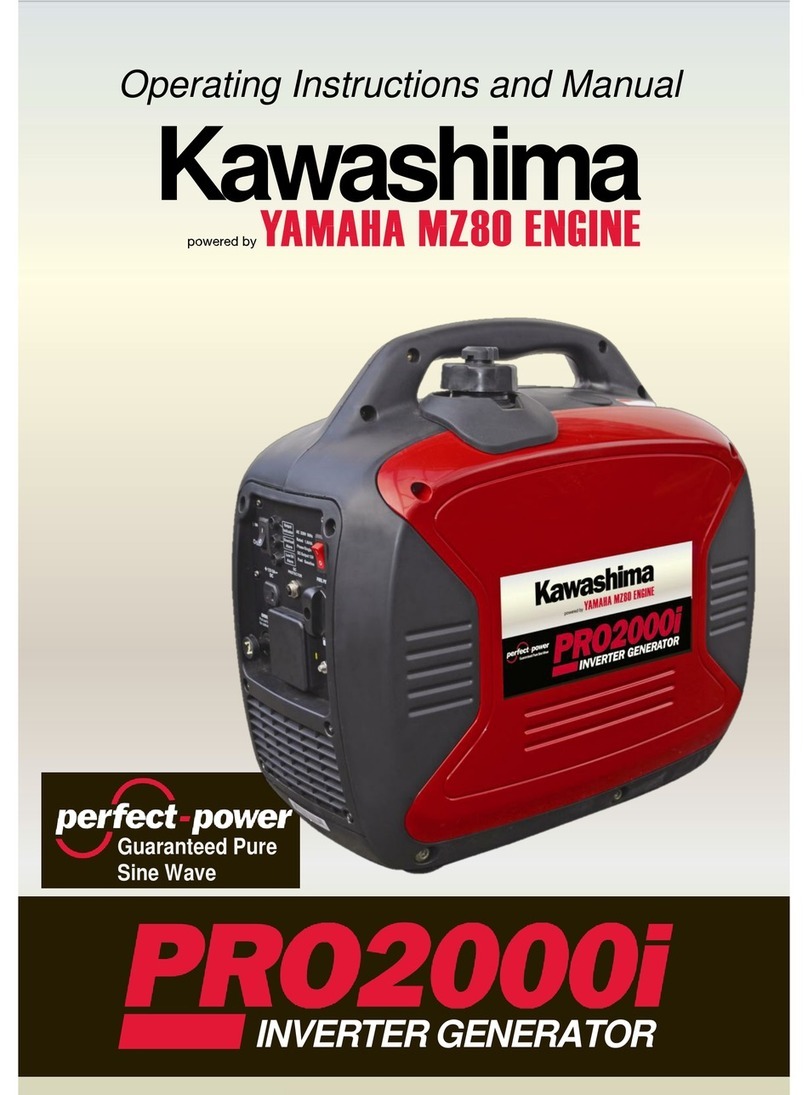
KAWASHIMA
KAWASHIMA PRO2000i Operating instructions and manual
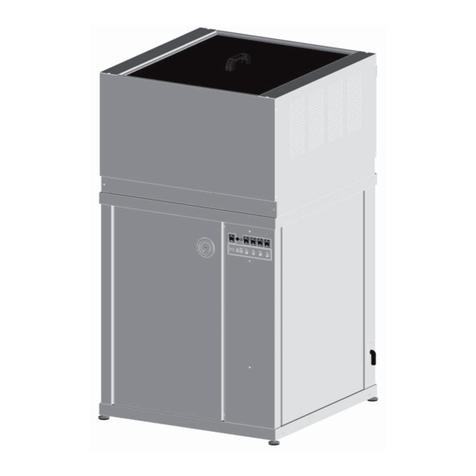
horeca
horeca 1638 Use and maintenance
